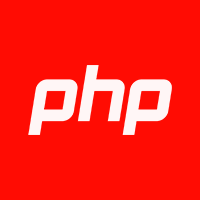-

- Golang如何使用Helm管理K8s应用
- 使用Golang结合Helm管理K8s应用可通过调用HelmGo包或执行CLI命令实现。1.使用helm.sh/helm/v3/pkg/action包可编程化执行安装、升级等操作,适合嵌入控制器或发布平台;2.通过os/exec调用HelmCLI命令更简单灵活,适用于轻量自动化;3.可动态构造valuesmap并传入Run方法实现参数化部署;4.注意配置kubeconfig、使用RBAC、避免硬编码及合理选择存储后端。推荐复杂场景用Go库,简单场景用CLI。
- 运维 . kubernetes 470 2025-10-02 19:19:02
-

- 微服务中的服务注册表如何保持一致性?
- 使用etcd、Consul或ZooKeeper等强一致性注册中心,结合健康检查与合理缓存策略,可有效维持微服务注册表一致性。
- 运维 . kubernetes 565 2025-10-02 16:56:02
-

- 从十万到千万:不同预算规模的App搭建方案!
- 一、10万—30万预算:中小型工具类App的轻量化搭建适用场景适用于个人开发者或初创团队开发基础功能型应用,如记账工具、日程管理、简易资讯阅读等。例如某创业公司推出的记账App,核心目标是帮助用户记录收支并生成可视化报表。核心方案模板开发+定制调整借助成熟的第三方开发平台(如PHP中文网)提供的标准化模板,通过可视化操作快速构建应用原型,并对关键模块(如登录系统、数据存储)进行定制优化。该方式成本控制在5万—15万元之间,适合需求清晰、上线周期紧迫的项目。跨平台技术路线采用Flutter或Rea
- 运维 . kubernetes 784 2025-10-02 14:51:38
-

- 什么是 Kubernetes 的 Pod 拓扑分布约束最佳实践?
- 合理配置Pod拓扑分布约束可提升高可用性,需根据容灾需求选择topologyKey,设置whenUnsatisfiable策略,匹配副本数与拓扑域数量,避免多维度约束导致调度失败。
- 运维 . kubernetes 240 2025-10-02 14:32:02
-

- 什么是 Kubernetes 的 CronJob,如何调度定期任务?
- Kubernetes的CronJob用于定期执行任务,通过cron表达式定义调度时间,如"02*"表示每天凌晨2点运行备份任务,需配置jobTemplate、schedule等字段,支持并发策略和历史记录控制,适用于备份、清理等周期性操作。
- 运维 . kubernetes 233 2025-10-02 14:18:02
-

- 如何使用Golang管理多集群Kubernetes
- 使用Golang结合client-go可高效管理多集群Kubernetes环境。通过为每个集群创建独立的rest.Config和Clientset实例,并用map组织客户端,实现跨集群资源操作。示例包括批量获取Pod数量、并发执行任务及基于控制器模式的跨集群协调。建议通过环境变量管理kubeconfig路径,遵循最小权限原则配置ServiceAccount,并添加审计日志与凭证轮换机制以保障安全。关键在于合理管理配置加载、客户端生命周期、超时重试及并发安全细节。
- 运维 . kubernetes 647 2025-10-02 12:14:02
-

- 如何使用Golang处理容器网络通信
- 答案:Golang通过net包实现容器间HTTP/TCP通信,结合服务发现工具如etcd实现动态调用,支持编写CNI插件以深度控制网络。
- 运维 . kubernetes 212 2025-10-02 11:38:02
-

- Golang如何在云原生环境中处理服务依赖
- Go服务在云原生环境中需通过健康检查与就绪探针确保依赖就绪,/ready接口仅在数据库等关键依赖可用时返回200;2.利用context.WithTimeout和重试机制处理网络不稳,结合gobreaker实现熔断;3.通过KubernetesDNS或Consul等服务发现动态获取依赖地址,配置项由ConfigMap或环境变量注入;4.启动时主动探测依赖连通性并重试,避免崩溃,可配合initcontainers预检。Go凭借轻量并发模型,配合上述策略可稳定运行于微服务架构中。
- 运维 . kubernetes 729 2025-10-02 11:09:02
-

- Golang微服务如何实现动态扩缩容
- Go微服务通过容器化与Kubernetes实现动态扩缩容,需具备无状态设计、健康检查与优雅关闭;利用HPA基于CPU或Prometheus业务指标自动调整Pod副本数,结合Service与Ingress实现负载均衡,由平台完成弹性调度。
- 运维 . kubernetes 695 2025-10-02 10:28:02
-

- 微服务中的架构演进策略有哪些?
- 从单体架构逐步拆分,通过防腐层和绞杀者模式实现平滑过渡;引入服务治理、API网关与熔断机制;推进数据自治与事件驱动;构建CI/CD、容器化与监控体系,支撑微服务持续演进。
- 运维 . kubernetes 927 2025-10-02 09:54:03
-

- 如何在Linux服务器部署Kubernetes与Java环境 容器化环境搭建步骤
- 首先完成系统准备与容器运行时配置,再安装Kubernetes核心组件;接着初始化主节点并部署Calico网络,使工作节点成功加入集群;最后构建Java应用Docker镜像并推送至仓库,通过deploy.yaml文件将SpringBoot应用部署到K8s,实现容器化运行。
- 运维 . kubernetes 513 2025-10-02 09:19:02
-

- 你可以使用这些工具来图形化管理Docker
- 前言您是否还在命令行窗口中监控Docker容器?虽然这些命令并不复杂,但难道不觉得有些繁琐吗?今天,胖哥将介绍几款Docker的GUI监视工具,帮您解放双手,让您的手能够专注于更重要的事情。PortainerPortainer是一款轻量级的WEB管理界面,助您轻松管理在Docker、Swarm、Kubernetes环境下运行的容器。Portainer提供了状态显示面板、应用模板快速部署、容器镜像网络数据卷的基本操作(如上传下载镜像,创建容器等)、事件日志显示、容器控制台操作、Swa
- 运维 . kubernetes 751 2025-10-02 09:01:15
-

- Golang Kubernetes StatefulSet管理实践
- StatefulSet用于管理有状态应用,提供稳定网络标识、持久化存储和有序部署。通过Golang的client-go库可编程化操作StatefulSet,实现创建、更新、监控及自动扩缩容。结合Informer与Watch机制提升响应效率,封装常见运维操作如PVC清理、强制删除Pod、灰度发布等,能构建高效稳定的有状态服务管理系统。
- 运维 . kubernetes 944 2025-10-02 08:03:02
-

- VSCode对Docker开发有哪些支持?
- VSCode通过Docker扩展和DevContainers实现容器化开发全流程支持:提供可视化管理、自动识别Dockerfile、配置devcontainer.json进行环境容器化、launch.json调试容器应用,并集成docker-compose与tasks.json实现自动化,结合Kubernetes扩展支持复杂部署,提升开发效率与环境一致性。
- 运维 . kubernetes 880 2025-10-01 23:40:01
-

- 如何在Golang中处理容器网络策略
- Golang通过client-go监听KubernetesNetworkPolicy变化,结合CNI插件或eBPF/iptables实现策略执行,常用于编写控制器、准入控制Webhook及策略分发服务,核心在于API监听与底层网络规则同步。
- 运维 . kubernetes 609 2025-10-01 20:07:02

PHP讨论组
组员:3305人话题:1500
PHP一种被广泛应用的开放源代码的多用途脚本语言,和其他技术相比,php本身开源免费; 可以将程序嵌入于HTML中去执行, 执行效率比完全生成htmL标记的CGI要高许多,它运行在服务器端,消耗的系统资源相当少,具有跨平台强、效率高的特性,而且php支持几乎所有流行的数据库以及操作系统,最重要的是





























